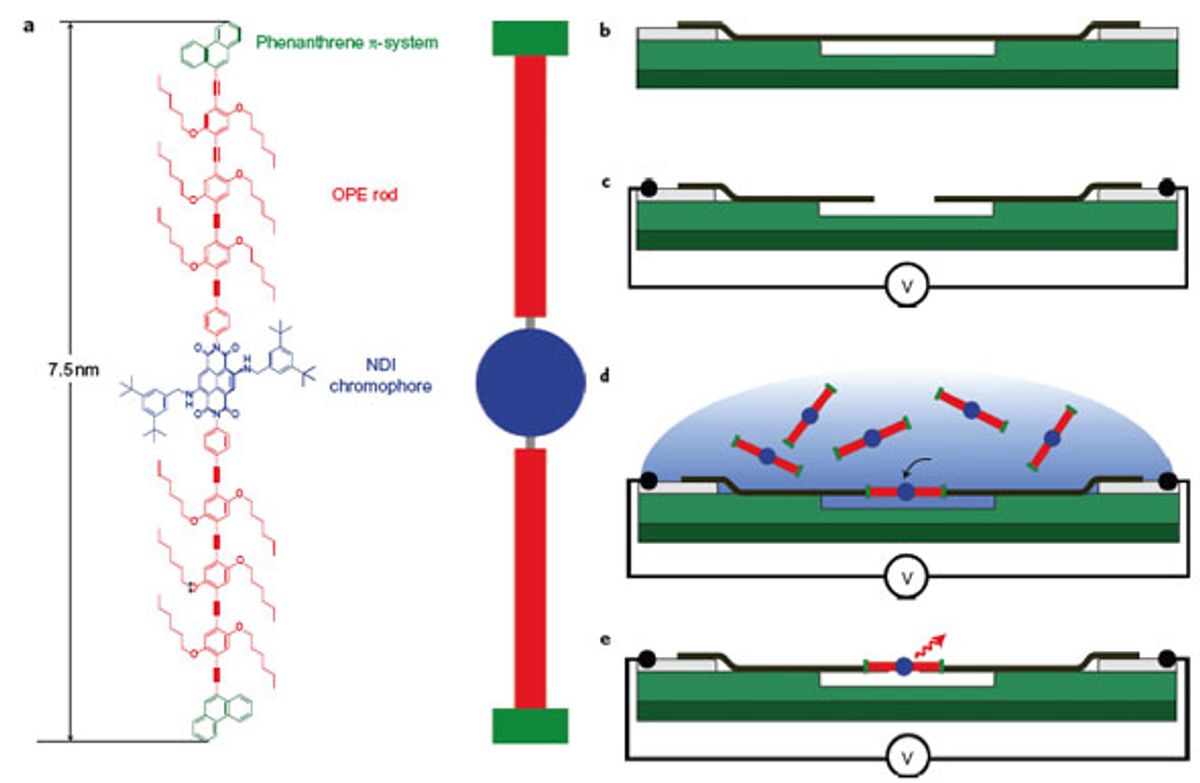Last week I highlighted some recent research in the UK that successfully built 3D molecular structures on a surface using buckyballs and the process of self assembly.
As exciting as this work is, I felt obliged to caution that this work is not going to usher in the era of molecular electronics anytime soon as was implied by some exuberant reports I had read on Twitter feeds.
But the prospect of building electronic devices with molecules is an appealing concept that remains the ultimate aim of many researchers investigations into nanostructured materials.
Over at Nanowerk they have a nice reexamination of molecular electronics and highlights recent work being done in Germany that has “demonstrated that rigidly wired molecules can emit light under voltage bias.”
The researchers from the Electronic and Optical Properties of Molecular Nanostructures group at Karlsruhe Institute of Technology (KIT) have reported their findings in the November 28th issue of Nature Nanotechnology.This, of course, is not the first time that electroluminescence has been observed in molecule. However, in those previous instances it came as a result of being in contact with the tip of a scanning tunneling microscope or in nanocrystals or nanoclusters.
As Ralph Krupke, who heads the KIT research group, told Nanowerk, "In our recent work, our motivation was to form a rigid light-emitting device based on single molecules."The design they developed with the assistance of Marcel Mayor from the University of Basel in Switzerland involved the placing of “a rod-like molecule between two metallic single-walled carbon nanotube electrodes forming a rigid solid-state device.”
“The major challenge was to integrate a bottom-up object (molecule) into a top-down structure (electrodes) and to have control over the critical dimensions,” explained Krupke to Nanowerk. “Moreover the electronic and optical properties of the molecule and the carbon nanotube electrodes had to be tailored such that electron transport and light emission is possible."
Dexter Johnson is a contributing editor at IEEE Spectrum, with a focus on nanotechnology.




